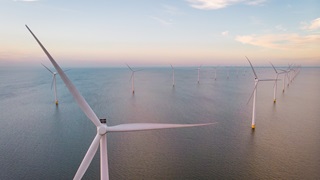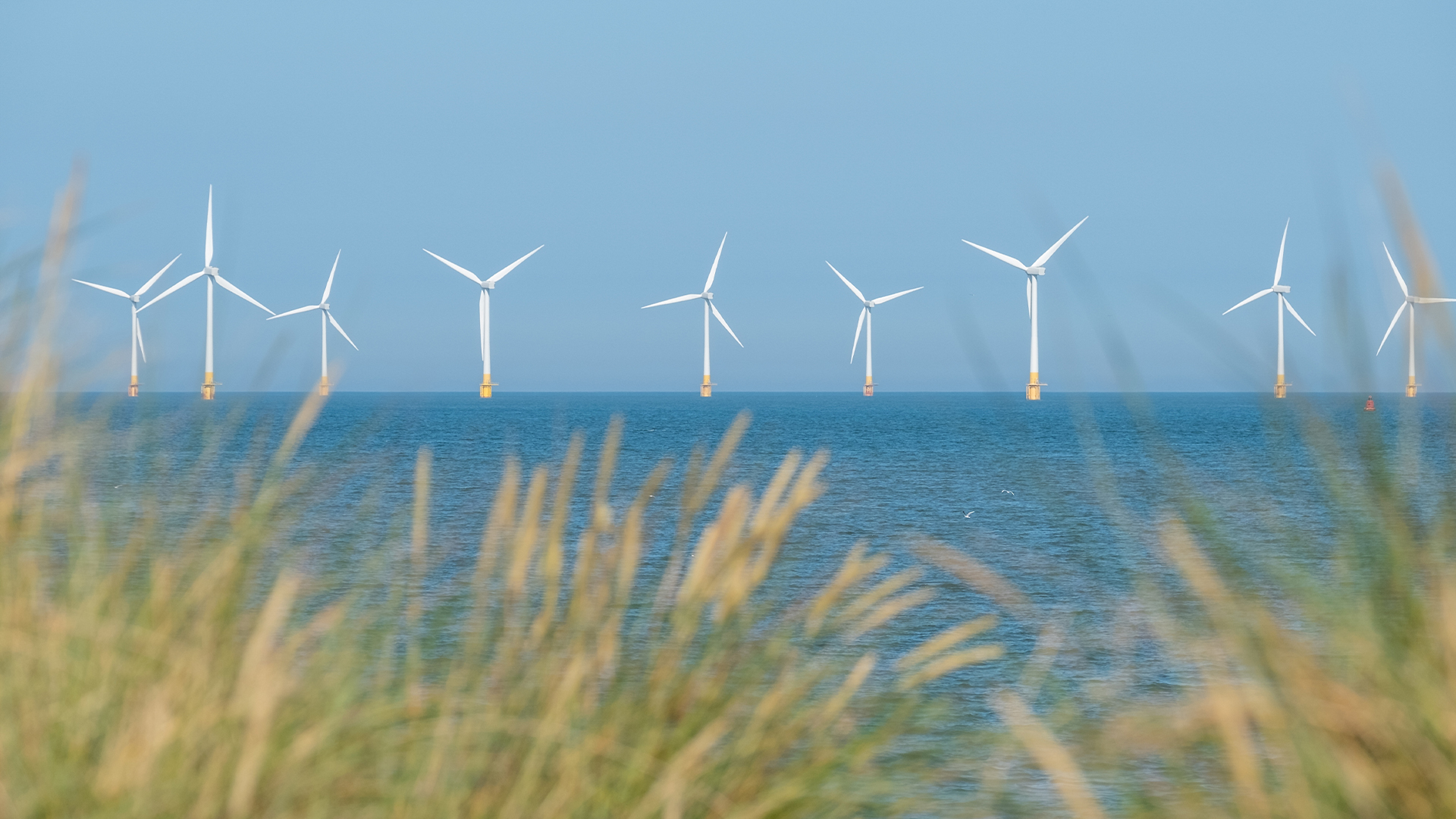
Publikation
Offshore wind in Australia: The key legal interfaces
Since the commencement of the Offshore Electricity Infrastructure Act 2021 (Cth) (‘OEI Act’) in June 2022, there has been a flurry of activity in the domestic offshore wind space.


Author:
Australien | Publikation | August 2023
This article was co-authored with Jack Brown.
Swiftly following the declaration of an area in the Pacific Ocean off the Hunter as suitable for offshore renewables development and the proposal to declare an area in the Southern Ocean,1 the Department of Climate Change, Energy, Environment and Water (DCCEEW) has released a new guidance document for Australia’s offshore wind industry.
The guidance document titled ‘Key environmental factors for offshore windfarm environmental impact assessment under the Environment Protection and Biodiversity Conservation Act 1999’ (July 2023) (EPBC Act Key Factors Guidance) is designed to assist offshore energy proponents with preparing referral and assessment documentation under the Environment Protection and Biodiversity Conservation Act 1999 (Cth) (EPBC Act).2
In this article, Norton Rose Fulbright unpacks the EPBC Act Key Factors Guidance and what it means for Australia’s offshore wind industry.
Australia’s offshore wind regulatory framework is currently comprised of the Offshore Electricity Infrastructure Act 2021 (Cth) (OEI Act), Offshore Electricity Infrastructure Regulatory Levies Act 2021 (Cth), Offshore Electricity Infrastructure Regulations 2022 (Cth) and the Offshore Electricity Infrastructure Regulatory Levies Regulations 2022 (Cth) (collectively the OEI Framework), with the release of further regulations expected later this year.
The OEI Framework operates in conjunction with other applicable Commonwealth legislative regimes, such as the EPBC Act. Approvals under the EPBC Act are required if an activity (the action) meets defined thresholds for significant impacts on matters protected under Part 3 of the EPBC Act, including the Commonwealth marine area.
In June 2022, DCCEEW released guidance on offshore renewables environmental approvals (2022 Guidance).3 The 2022 Guidance provides guidance on the regulatory requirements and outlines the interaction between the licensing regime under the OEI Framework and the environmental approvals processes of the OEI Act and EPBC Act.
DCCEEW has developed the EPBC Act Key Factors Guidance to provide offshore energy proponents with consolidated information on the key environmental factors to consider when developing projects in the Australian marine environment.4 The guidance is intended to assist proponents seeking to prepare referral and assessment documentation under the EPBC Act for their projects.
In first deciding whether a referral to the Minister for the Environment is necessary under the EPBC Act, the EPBC Act Key Factors Guidance recommends a conservative approach to impact assessment and selection of management measures, encouraging proponents to seek further information about the environment which will be impacted to increase their understanding of the likely impacts. It lists the mandatory considerations for assessments under the EPBC Act. Proponents should take note of these considerations and examine how these considerations may apply to their projects.
The EPBC Act Key Factors Guidance also confirms that proponents should first and foremost seek to avoid adverse environmental impacts and only when they cannot be avoided, mitigate and then offset them. Examples of avoidance strategies include the micro siting of wind turbines, seasonal activity scheduling and adopting environmentally-friendly infrastructure design.
The EPBC Act Key Factors Guidance provides detailed information on the key impacts of offshore wind farms being:
For each impact the EPBC Act Key Factors Guidance details:
A noteworthy theme throughout the EPBC Act Key Factors Guidance is ensuring the cumulative impacts of offshore renewable projects are minimised and managed appropriately. The EPBC Act Key Factors Guidance recognises that declaring areas under the OEI Act is likely to result in multiple large-scale offshore wind farms being developed in close proximity. It therefore encourages proponents, where appropriate, to take into account the potential impacts of not just their own project, but others in the applicable declared area.
The EPBC Act Key Factors Guidance provides a useful checklist for proponents who are preparing their referral and assessment documentation under the EPBC Act, giving clarity regarding DCCEEW’s expectations. It is informative as to the acceptable level of impact for offshore wind projects, though, this is of course not fixed and will be determined by the Minister on a project by project basis. Additionally, it is anticipated that the EPBC Act Key Factors Guidance may require updating as part of the proposed EPBC Act reforms.5
The EPBC Act Key Factors Guidance also flags two further developments.
First, DCCEEW has expressed a desire to collaborate and facilitate environmental monitoring data between regulators and industry. To deliver on this, DCCEEW is currently working to define appropriate survey protocols and data standards for offshore renewables projects.
Secondly, DCCEEW has flagged the possibility of implementing regional regulation to manage cumulative impacts. In this regard, it is envisaged that DCCEEW and NOPSEMA may adopt a regional planning approach, imposing similar management requirements on multiple projects within a declared area to appropriately manage cumulative impacts.
Our energy practice has a deep understanding of the developing regulatory framework for offshore wind in Australia, and we are currently advising a number of potential proponents in the sector.
Globally and within Australia, we have been involved with offshore wind from the beginning. We have advised on all aspects of the development (including environmental impact assessment), financing, operation, sale and purchase of more than forty five offshore wind projects across the UK, Europe, Americas and Asia as well as advising on the creation of regulatory frameworks for offshore wind in the UK.
This unique offering has enabled us to garner a reputation for understanding the complex issues that are specific to offshore wind, allowing us to draw on this experience and knowledge to help our clients succeed in new markets.
Area in the Pacific Ocean off the Hunter declared suitable for offshore wind - DCCEEW; Notice of Proposal to Declare an Area - Southern Ocean Region.pdf (storage.googleapis.com)
Key environmental factors for offshore windfarm environmental impact assessment under the EPBC Act 1999 (dcceew.gov.au), p 5
See generally https://www.dcceew.gov.au/environment/epbc/epbc-act-reform

Publikation
ESG is high on the regulatory agenda. Businesses, governments, regulators, financial services firms and individuals all have a part to play in tackling climate change and this view is increasingly shared across society.

Publikation
Ten things to know about insurance regulation in 19 countries.

Publikation
Dienstverträge von GmbH-Geschäftsführern enthalten regelmäßig ein nachvertragliches Wettbewerbsverbot, für dessen Einhaltung in der Regel eine Karenzentschädigung vereinbart wird.
Subscribe and stay up to date with the latest legal news, information and events . . .
© Norton Rose Fulbright LLP 2025